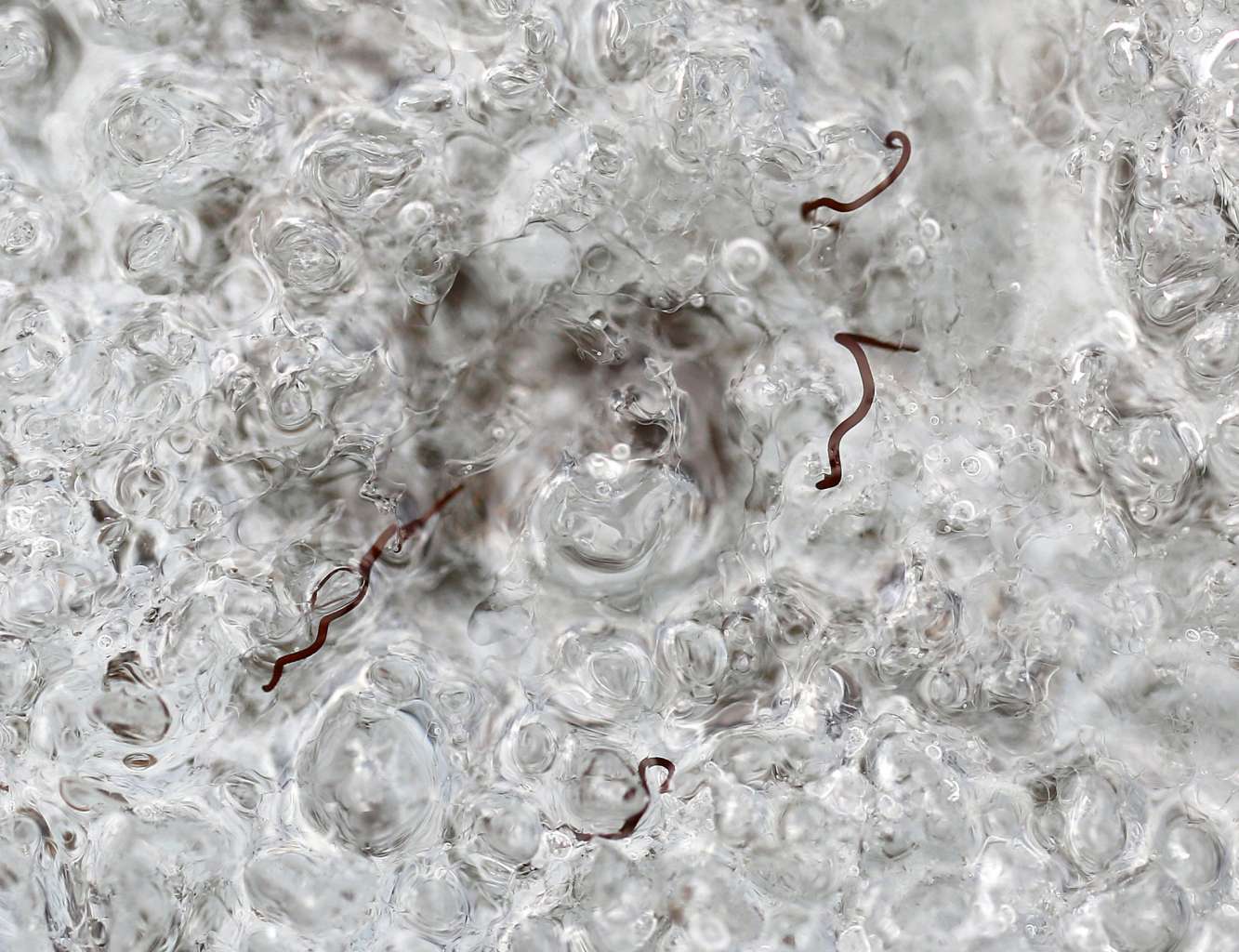Ice worms' survival secrets could help humans
Sign up now: Get ST's newsletters delivered to your inbox

Ice worms found on Sholes Glacier, located on the north-east slope of Mount Baker, on Aug. 7, 2015.
PHOTO: SY BEAN/THE SEATTLE TIMES
Sandi Doughton
Follow topic:
(THE SEATTLE TIMES) - A creature that thrives in ice and self-destructs when temperatures inch above freezing sounds like the stuff of science fiction. But as dusk fell on the shoulder of Mount Baker last month, Dr Mauri Pelto had to watch where he stepped to avoid squashing them by the dozens.
"There's about a hundred per square metre," said Dr Pelto, a glaciologist from Nichols College in Massachusetts who conducts what might be the world's sole annual survey of ice worms.
That's right. Ice worms.
Found on glaciers from Alaska to Oregon, these half-inch-long earthworm relatives are one of only two animals known to live exclusively in ice or hard-packed snow. The other is an animalcule called a rotifer.
Navigating through tiny cracks and fissures, ice worms dive deep during the day to avoid the sun. At twilight, they rise like moths drawn to darkness and graze on algae and other morsels ensnared in the crystalline lattice.
Dr Pelto, who piggybacks the worm work on his yearly glacier studies in the North Cascades, has documented densities as high as 6,000 per sq m in some places.
At first glance, the reddish-black worms look like bits of lichen or windblown chaff. But lean in close - as Dr Pelto and his team did for their census - and it's clear these slowly undulating threads are alive.
In past years, the researchers counted more than eight times as many worms on the permanent snowfield near the Sholes Glacier that they surveyed again this August. The scant snowfall this winter did little to replenish the worms' habitat, Dr Pelto pointed out. "I imagine this is pretty stressful for them."
But he's also documented a downward trend across the region over the past 21 years, with worm populations appearing to decline in concert with the contraction of their icy home range.
"If we lose the glaciers," Dr Pelto said, "we lose the ice worms."
Though the annelid formally known as Mesenchytraeus solifugus has inspired song and verse, most notably Robert Service's Ballad Of The Ice Worm Cocktail, their fate isn't likely to stir as much passion as iconic animals like salmon, whose lives are also tied to glaciers.
But the biochemical bag of tricks that enables ice worms to live at temperatures where most life sputters out could prove beneficial to human health someday. That's why the National Institutes of Health, the National Science Foundation and Nasa have all funded research on a creature few people have ever heard of.
"This family of worms is unique in all the world," said Dr Daniel Shain, of Rutgers University.
Through DNA analysis, Dr Shain and his colleagues found that ice worms and their closest relatives exhibit stunning genetic variability that allows them to inhabit a wide range of niches - from warm soil to blue ice. They also traced the ice worms' origins to Alaska, where they evolved from river-dwelling cousins about 10 million years ago.
-
Meet the ice worm
- First described on Alaska's Muir Glacier in 1887
- Found in temperate glaciers in Alaska, British Columbia, Washington and Oregon
- Above 5 deg C, they decompose; below minus 6.67 deg C, they freeze
- Species name "solifugus" means sun-avoiding
- Range in length from 6.35 to 25.4mm
Dr Shain is convinced the tiny wigglers first reached the Pacific North-west by hitching a ride on a bird's foot.
But it's their physiology that's truly amazing. In most creatures, cold temperatures deplete energy stores and slow down metabolic processes. Ice worms actually crank out more ATP - the universal energy source for living things - when the temperature drops.
"They essentially have the potential to increase their metabolism as it gets colder," Dr Shain said.
He has identified the enzyme pathway responsible, and is trying to replicate the effect in bacteria and flies.
Once the mechanism is better understood, Dr Shain hopes it can be used to develop chemicals that extend the storage time of transplant organs, which deteriorate rapidly once they're harvested and chilled. The US Army is also interested in drugs that protect people from frostbite and boost cold tolerance.
It's even conceivable the slender ice worm might offer clues to increasing energy production without having to eat so much, Dr Shain said. "In principle, it could be a great diet pill."
Ice worms are currently so widespread that they're not in imminent danger of extinction in the North-west. But there's no doubt their long-term outlook is grim.
"Why should people care?" Dr Shain asked. "I would argue that they still have quite few secrets up their sleeves that we want to figure out before we lose them."
Courtesy of The Seattle Times, a member of the Climate Publishers Network. The network is a content-sharing partnership among international news publishers, including The Straits Times, on climate change stories ahead of the 2015 UN climate summit in Paris.

